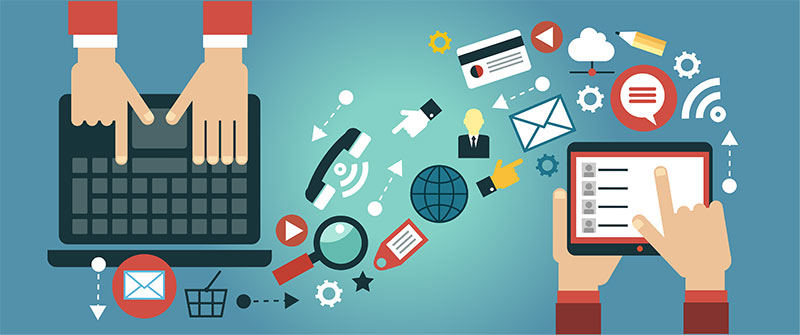In today’s digital age, the Internet of Things (IoT) is playing a crucial role in transforming omnichannel marketing strategies. It has become a powerful tool for businesses to enhance customer engagement and drive sales.

1. Understanding IoT and Omnichannel Marketing
- IoT Defined: The Internet of Things refers to the network of physical devices, vehicles, home appliances, and other items embedded with electronics, software, sensors, and connectivity which enables these objects to connect and exchange data.
- Omnichannel Marketing Defined: Omnichannel marketing is a strategy that integrates all marketing channels, including online, offline, mobile, social media, and email, to provide a seamless and personalized experience for customers.
2. How IoT Enhances Customer Engagement in Omnichannel Marketing
- Personalized Experiences:
- Data Collection: IoT devices such as smart appliances, wearables, and home assistants collect vast amounts of data on user behavior, preferences, and interactions. For example, a smart refrigerator can track consumption patterns and suggest shopping lists or promotions directly to the user’s smartphone.
- Tailored Marketing Messages: This data allows businesses to tailor their marketing messages and offers to the individual level, creating a highly personalized customer experience. Customers are more likely to engage with a brand when they receive relevant and timely offers.
- Seamless Customer Experiences:
- Bridging Physical and Digital Channels: IoT devices play a crucial role in bridging the gap between physical and digital channels. For instance, a customer might use a mobile app to set preferences on a smart device at home, interact with a voice assistant to reorder a product, and then pick up the product in a physical store where personalized recommendations are displayed on digital screens.
- Uninterrupted Customer Journey: By enabling constant connectivity and interaction, IoT devices ensure that the customer journey is uninterrupted, regardless of the channel. This seamless integration across channels not only enhances the customer experience but also boosts operational efficiency.
- Interactive Marketing Campaigns:
- New Avenues for Engagement: IoT devices open up new avenues for interactive and engaging marketing campaigns. For example, Nike has leveraged augmented reality (AR) through its smartphone app to allow customers to try on shoes virtually, providing a highly engaging and personalized shopping experience.
- Captivating Customers: These innovative interactions not only enhance customer engagement but also strengthen brand loyalty and differentiation. Customers are more likely to remember and recommend a brand that offers unique and interactive experiences.

3. How IoT Drives Sales in Omnichannel Marketing
- Inventory Management and Demand Prediction:
- Real-Time Data for Inventory Control: Real-time data from IoT devices can help businesses manage inventory more effectively. For example, sensors in stores can track product availability and notify employees when it’s time to restock.
- Predicting Demand: By analyzing data from IoT devices, businesses can also predict demand more accurately. This allows them to optimize supply chain processes and ensure that products are available when customers want to buy them.
- Upselling and Cross-Selling Opportunities:
- Identifying Customer Needs: IoT devices can provide insights into customer needs and behaviors, enabling businesses to identify upselling and cross-selling opportunities. For instance, if a customer frequently uses a particular smart device, the business can recommend related accessories or upgrades.
- Targeted Promotions: Based on this information, businesses can then offer targeted promotions to encourage customers to make additional purchases. This can increase the average order value and drive sales.
- Improved Customer Loyalty and Repeat Purchases:
- Enhanced Customer Experience: The personalized and seamless experiences enabled by IoT devices can lead to increased customer loyalty. Satisfied customers are more likely to return to a brand and make repeat purchases.
- Building Long-Term Relationships: By providing excellent customer service and continuously meeting customer needs, businesses can build long-term relationships with their customers. This can result in a steady stream of sales over time.
4. Challenges and Considerations
- Data Privacy and Security: With the increasing use of IoT devices, businesses need to ensure the privacy and security of customer data. Strict data protection regulations, such as the GDPR, require businesses to handle customer data responsibly.
- Technical Complexity: Implementing IoT in omnichannel marketing requires technical expertise and infrastructure. Businesses need to invest in the right tools and technologies and train their staff to use them effectively.
- Costs: The implementation of IoT devices and related technologies can be expensive. Businesses need to carefully consider the costs involved and ensure that the investment will yield a positive return.

In conclusion, the Internet of Things has the potential to revolutionize omnichannel marketing by enhancing customer engagement and driving sales. However, businesses need to address the challenges and considerations associated with IoT implementation to fully unlock its potential.




